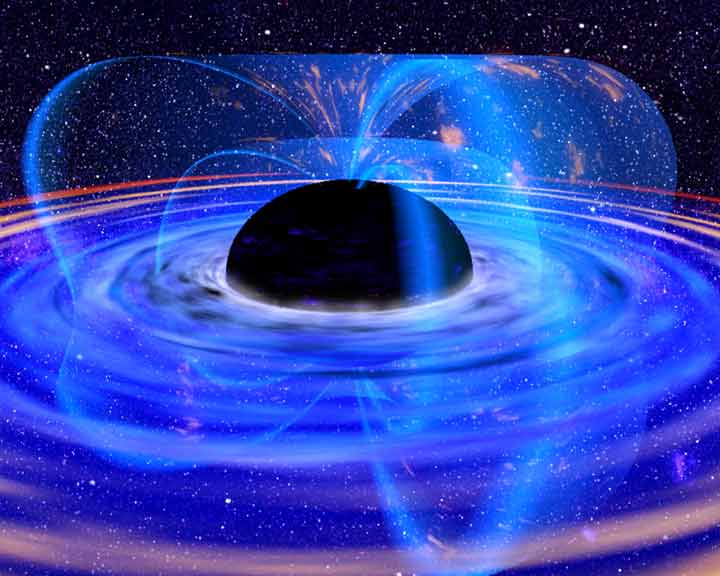Astronomers have caught their best glimpse yet of a star being ripped to pieces by a supermassive black hole.
The drama unfolded in the constellation Draco, dragon in Latin,  which is 2 billion light years away but nonetheless visible from the northern hemisphere.
which is 2 billion light years away but nonetheless visible from the northern hemisphere.
Just like our own Milky Way galaxy, Draco has a massive black hole, weighing in at the equivalent of 3 million times the mass of our Sun, sitting at its centre.
And it was in this vicinity that Johns Hopkins scientist Suvi Gezari and her colleagues spotted, in July 2010, the celestial equivalent of stellar butchery as a star on a tight orbit around the black hole was first robbed of its outer rind of hydrogen, and then torn apart in a spectacular blaze of radiation.
Followed by the Hawaiian Pan-STARRS-1 and NASA GALEX telescopes, the bursts of radiation emitted by the event are so clearly recorded that Gezari and her co-workers have been able to perform a cosmic post mortem, piecing back together the final months of the doomed star's life.
What the data suggest is that the star was a red giant when it met its end. Red giants form when stars have all but exhausted supplies of hydrogen at their centres. Instead, the core of the star comprises mostly helium, and the heat from the fusion process causes the residual hydrogen to puff up into a massive cloud hundreds of times larger than their former selves.
In this state the Draco star approached the black hole. At a distance equivalent to about the orbit of Pluto from the Sun in our own system, the outer hydrogen coat of the star was stripped away, leaving just the helium core.
Now, roughly a third of its former size and with a quarter of its mass remaining, this stellar cinder continued its deadly approach. At a distance from the black hole of 50 million kilometres, equivalent to the orbit of Mercury from the Sun, and travelling about 32 million kilometres per hour, the huge gravitational tidal forces of the black hole tore the helium core to pieces.
Half the material was sent spinning away into space; the rest was consumed. And as it fell into the black hole about two months later, the material was heated, triggering the light show seen by Gezari and her team and reported this week in Nature.
These observations, which occur with a frequency of only about once per ten thousand years per galaxy, offer a unique insight into the physics of what lurks, black, dark and deadly, at the centres of probably the majority of galaxies...










Comments
Add a comment